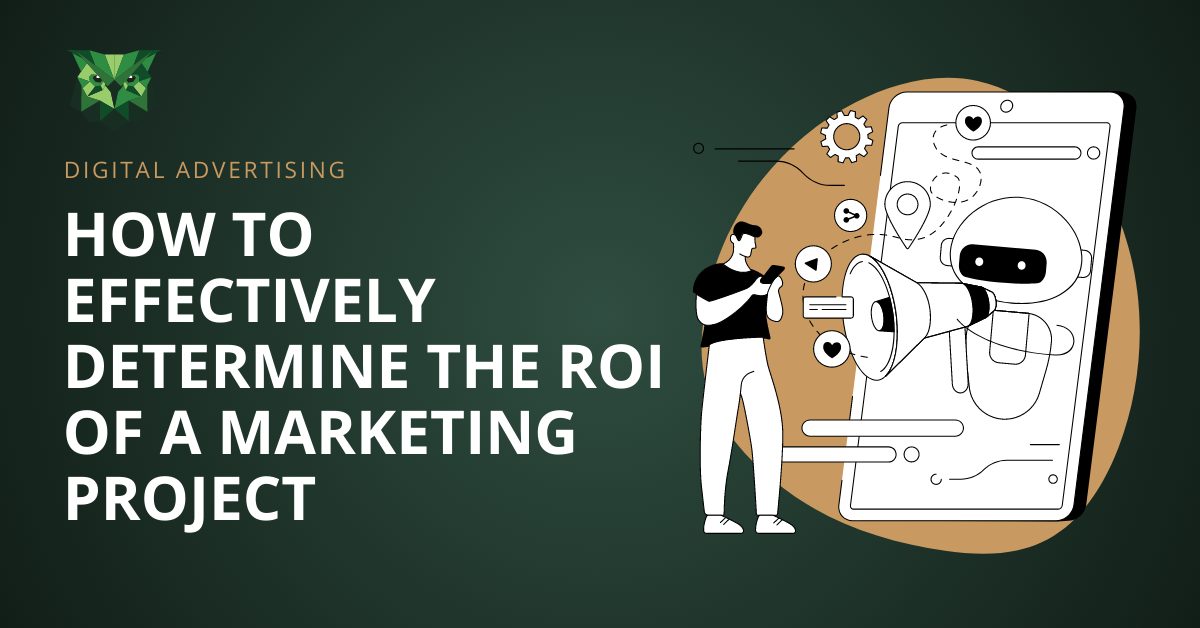How to effectively determine the ROI of a marketing project
4 min read

4 min read

by Aleksandra Stamatović
Nestled between the boundless realm of financial metrics and the enigmatic world of marketing strategy, there lurks a formidable beast—Return on Investment (ROI). Notorious for its elusive nature, this creature often leaves marketers puzzling, questioning the value of their hard-won campaigns. With this article, I extend my hand, guiding you through this puzzling labyrinth of numbers to offer you a simple, effective method of determining the ROI of a marketing project. Together, let’s demystify the beast and unravel the enigma!
First, let’s get to know the beast we’re dealing with. In its simplest form, ROI is a percentage that tells you how much return you get for every dollar spent. It’s your trusty yardstick to measure the performance of your marketing campaigns. The magic formula is ROI = (Net Profit / Cost of Investment) x 100%. But remember, in this marketing world, magic is more than abracadabras and wand-waving; it involves a lot of meticulous number-crunching too.
Here’s where the fun begins (and by fun, I mean the kind of joy that accountants experience during tax season). The challenge lies in accurately identifying your net profit and investment cost.
You’d have to consider direct and indirect costs for the investment cost. Direct costs are your campaign expenses, while indirect costs are more subtle, like labor costs and tools and technologies used.
The net profit, on the other hand, isn’t just the revenue generated by your campaign. You have to subtract the cost of goods sold and any additional costs related to sales, such as shipping or packaging.
Now, where does one find these elusive figures? They are usually scattered across multiple places – your company’s financial statements, campaign analytics, sales data, and often, even in emails or physical receipts. The thrill of the hunt, right?
We could attribute every sale to a specific marketing campaign in a perfect world. However, we live in a world where customers have the audacity to interact with multiple marketing touchpoints before making a purchase. The nerve! This multi-touch conundrum, attribution, adds another layer of complexity to our ROI calculation.
Several attribution models are available, ranging from the simple (such as last-touch attribution) to the sophisticated (like data-driven attribution). The trick is to choose the model that best suits your business objectives and campaign strategy. Yes, it requires a bit of guesswork and a sprinkle of intuition. But hey, who said taming a beast was going to be easy?
Having conquered the math and deciphered the code, it’s time to interpret the ROI. A positive ROI means your marketing campaign has been profitable. A negative one means it’s time to hit the drawing board again. But don’t let a negative ROI dishearten you. As the old saying goes, you must sometimes lose a battle to win the war.
Interpreting the ROI is not just about drawing conclusions but also making comparisons. Comparing the ROI of different campaigns can help you understand which strategies work best for your business. And remember, ROI is not the only indicator of success. There are other metrics, like brand awareness and customer satisfaction, which might not directly contribute to ROI but are essential for the overall growth of your business.
The journey to calculating and interpreting the ROI of a marketing project might be fraught with challenges, but the reward is worth the struggle. Understanding the ROI is crucial in evaluating your marketing strategies, budget allocation, and overall business growth.
As we conclude this little expedition, remember this – ROI is not a monster to be feared but a beast to be understood, tamed and used to your advantage. The metrics might seem daunting, the numbers overwhelming, but once you’ve deciphered the code, you’ll find that ROI is less of a beast and more of a faithful hound, helping you navigate the world of marketing with greater confidence and clarity. So here’s to mastering the art of ROI and the many successful marketing campaigns to come!